One of the things we’re trying to get a sense of in this project is governmentality as something ‘more-than-human’; a close-grained understanding of how power moves, and the colonial state constitutes itself, through the networks, technologies and instruments of imperial rule. A better word for these things – the materials, so to speak, of power – might be the technics of rule. These technics include paper, bodies, buildings, files, despatches, forms, archives, ships, railways, telegraphs, lighthouses, and weaponry; they also include networks of communication and vectors of force, the cultures and discourses of bureaucracy and scholarship, the practices by which governing elites were educated and acculturated as governing classes, and the epistemological structures – systems of ordering and classification, methods of study and learning, procedures of enquiry and structures of understanding – which interpreted, translated, and produced the subjects of imperial rule.
In studying our three snapshots – 1838, 1857, and 1879 – we’re hoping to get a rough sense of how these technics changed over time. But our focus is often on the more obviously instrumental. Richmond Barbour, in a wonderfully useful phrase, proposes the concept of a ‘cultural logistics’.[1] Admittedly, he’s using it in a slightly narrower context: the phrase comes from his work on the early documentary culture of the East India Company, and the ways in which the epistolary forms of the early 17th century were adapted into a system by which to run a global corporation at unprecedented scales of distance and time. In our case, the technologies (both documentary and ‘hard’) are more complex, and the trading company has become a huge territorial empire, but Barbour’s basic point stands: the concept of a cultural logistics gives us a useful shorthand for conceptualizing how administrative systems are produced from a dialectical relationship between form and content, technology and culture, meaning and structure.
This week, I’d like to take a look at two figures in the India Office who illuminate something of how this dialectic worked, how the machinery of imperial government was tied into the institutional structures and ideologies of imperial knowledge, and how both logistics and scholarship could be enlisted in conflict between different forms of imperialism.
George Christopher Molesworth Birdwood (1832-1917) and Clements Robert Markham (1830-1916) almost coincide in their lifespans, but in their relations to the India Office and the Imperial project at large they represented, in their idiosyncratic ways, very different generations. Their careers illustrate the importance, in understanding imperial networks, of David Lambert and Alan Lester’s concept of ‘imperial careering’ – they move, in their complex trajectories, between widely varying contexts, locales and places of work; between the most remote (read: unconnected) parts of the world and the imperial centre; between knowledge practices and disciplines; between the corridors of government, the fields of imperial ‘action’ in colonial and non-colonial spaces, and the institutions of learning, both formal and less so, where knowledge and disciplines were made and contested.[2]
In 1858, the East India Company was formally dissolved and replaced by the India Office. The Office was run by a parliamentary secretary of state and a permanent undersecretary: there was also a Council of India, who were supposed to give assent to all legislation. This was in a way a sop to the old Company hands, and meant to preserve some sense of the old corporate ethic, but under successive undersecretaries its power was increasingly eroded, and it became essentially a rubber-stamp committee that was often circumvented.
By 1879, too, the India Office had moved into its new premises in Whitehall, which is now the Foreign and Commonwealth Office. The building is fascinating in itself – its baroque high imperialist aesthetic, pursued through a dizzying neoclassical gigantism, expresses an emergent imperial ideology which is at once syncretic and triumphantly appropriative, so that the figures of Indian rivers and Hindu deities are carved within Romanesque arches and the materials of the colonized culture re-presented as cod-medieval ceiling frescoes.
Within the India Office, as everywhere else, rule was becoming centralized, professionalized and technologized: the number of departments dealing with different subjects proliferated, and the flows of paper between departments, and between the IO and other government agencies, became increasingly complex. In the days before telegraphs, the presidencies in Bombay, Calcutta and Madras had exercised a degree of autonomy in their application of policy, largely because London had no choice in the matter, although the Court and Directors spent a good deal of time remonstrating with them about it. The new communication technologies, and the multiplier effects of speed and scale of correspondence, had upset this arrangements. Carefully-structured periodical despatches gave way to more various, less rigidly organized and prioritized information, and the burden of making sense of intelligence across all scales began to shift increasingly towards London; at the same time, the speed with which communication could occur gave free rein to the naturally centripetal tendencies of an ever-more-rationalised bureaucracy. The distribution of power and agency through the web of empire focused increasingly on London, as London became more able to make its presence felt at all points in the network.
These developments were, of course, part of a global trend in practices of governmentality. But in the India Office, as with the case of the Council of India, they represented a generational rupture and a major ideological reorientation.
To George Birdwood, they were in many senses a betrayal. Birdwood’s life placed him, culturally, within the culture of the ‘old India hands’ who, by the 1870s, were being superseded in the India Office by a newer, more bureaucratic class. Like most of them, he had spent much of his early life in India: born to a longstanding Company family in Karnataka, he attended public school and university in the UK and returned to India to serve as a medical doctor. After serving in the Indian Navy and becoming a professor of medicine and botany at Bombay – a city whose civic life under the East India Company he’d spend much of his subsequent life eulogizing – he returned to London as an expert on Indian languages and material culture. He spent the rest of his life working at the India office, and writing and lecturing widely, with increasing eccentricity and obstreperousness, on Indian matters.
Birdwood’s job in the India Office began in 1868 when the office first moved into Gilbert Scott’s new building. He was attached to the Revenue and Statistical Department, but also named Keeper of the Museum. The old East India House had had a museum and a scholarly library since the late seventeenth century. However, these were being dispersed: the library had been moved to Cannon Row, where the old Board of Control offices were, and the contents of the Museum had been crammed into some small rooms on the third floor of the India Office. Birdwood’s job as Keeper of the Museum was in effect to destroy the museum, and disperse its contents to the British Museum and South Kensington, where many of its artefacts – including Tipu Sultan’s famous tiger – ended up forming the core collection of the Victoria and Albert Museum.
Birdwood didn’t want this to happen: along with many of the old Company hands, he began to invest in an increasingly well-articulated nostalgia for Company rule, which he envisaged as being more personal, less bureaucratized, and more invested in India itself as a field for human and cultural enquiry. These men were from a culture which valorized the ability to speak South Asian languages and emphasized the value of having spent decades in country: to them, separating scholarship from government betrayed an ideal of colonial rule, and an ethic of a colonial governing caste, to which they’d devoted their lives.
In 1875, with the museum being dispersed, Birdwood’s next move was to turn the paper records of administration themselves into antiquarian artefacts. He rather cleverly stage-managed the discovery of a box of old charters from the 17th century, and set up a new record-room with the charters in the middle of it, as objects of antiquarian veneration. He even suggested that one particular document – a roll of subscribers from 1699 – be installed under glass in the Council Room, perhaps in an attempt to remind the administrators of India of their project’s origins in the bourgeois mercantile elite of the old City of London.
I would also venture to suggest that the parchments should be carefully restored, and exhibited in this Office. I would not have them sent to the Museums. They are not idle curiosities to be toyed about in museums, but State Archives which should be reverently kept in the India Office itself: and after restoration should be rolled up, and put away in a glass cabinet in the Council Room. The roll of the original Subscribers of the £2,000,000 stock which contains the names of nearly the whole of the well to-do middle class people of England a century ago, should never again pass out of sight.[3]
Birdwood’s move, in effect, was to take the artefacts of the documentary technology of an earlier regime of global governance, and enshrine them, for display and veneration, in a semi-sacralised space. Paperwork itself would be enlisted in the formation of a kind of reverential historiography of empire which was designed to call the imperial project back to its heroic origins. If this wasn’t an affair which particularly concerned the present-day administration of the empire, Birdwood didn’t care: his whole point was to make sure that, while making the decisions of governance, the materials of an older and implicitly greater age were present and visible. He worked within the cultures of antiquarianism and Orientalist scholarship which he had acquired from his museum work and connections at the Royal Asiatic Society, and was intent on applying this scholarship – already being superseded by new curatorial practices and new Orientalisms – to the task of maintaining some kind of moral guardianship over the empire.
At the same time, Clements Robert Markham was consolidating the new Geographical Department.
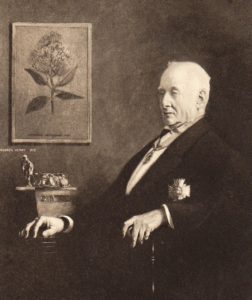
Clements R. Markham c.1912. Note the framed drawing of the cinchona plant and the effigy of a polar explorer drawing a sledge, a memento of the 1901-4 British Antarctic Expedition led by Captain Scott.
Markham was one of the pre-eminent characters of what Felix Driver has usefully termed “geography militant”. His biography is too spectacularly various to condense here – it’s high time, in fact, that someone took him on as the subject for a book – but he takes Lambert and Lester’s ‘imperial careering’ to a hyperkinetic extreme. He began as a navy midshipman, spending time in the Arctic on one of the earliest Franklin search expeditions, and in Andean Latin America’, where he learned Spanish and Quechua, producing a (highly questionable) first English translation of the drama Ollantay. He was employed in various clerkly roles in the East India Company and India Office, but these were quickly overtaken by his portfolio career as a prolific writer and editor of early modern voyages, fixer of expeditions and evangelist of applying Humboldtian world geography to the practice of empire. Amongst other adventures, he proposed and carried out the expedition to transplant cinchona trees from Andean Ecuador to India (thus providing a supply of quinine, the only known prophylactic against malaria, for European use in the Subcontinent); accompanied the punitive 1867-8 expedition into Abyssinia as a “field geographer”, complete with a full set of instruments and team of assistants; and got sacked from the India Office for sailing to the Arctic on a whim without bothering to request leave. He spent the latter part of his life as a grandee of the Royal Geographical Society, during which time, amongst other things, he alienated many of his colleagues with the grandiosity and tactlessness, produced a body of scholarship on the history of exploration which was as voluminous as it was shoddily executed, and was the driving force behind the British Antarctic Expeditions which culminated in the loss of Captain Scott. (In fact, Scott made him godfather to his son, later Admiral Peter Markham Scott. Markham’s last diary entry, in 1916, relates him walking around his garden with the fatherless young boy. A few days later he set his bed alight while reading and died from shock.)
His work in the India Office, though short, was of a piece with the energy, improvisation and ambition of the rest of his career. Working across the Political and Secret, Revenue and Public Works Departments during the India Office’s early years, he was continually frustrated by the disorder of the bureaucracy: papers did not circulate efficiently enough for his liking, and most troublingly, the relevant records were often difficult to call up. The archives, he wrote, “were lost or left to rot, and even the correspondence books were destroyed. Many previous documents were sold as waste paper, other were purloined or torn to pieces.”[4] In particular, he noted that maps, surveys and statistics were hard to come by. He became convinced that there should be a central repository of geographical information and that he should be the man to head it up; and in 1867, when the IO moved into its new premises, he was invited to try it. Over the next two years, he established his new department as an exchange/repository of all the information that could be classified as ‘geographical’ – reports, maps, plans and charts. This involved not only maps of the current state of India, but all maps, charts and reports going back to the East India Company’s foundation.
This is where Markham’s work intersects with Birdwood’s. Through his work in the Royal Geographical Society, Markham was involved in the Hakluyt Society, the grouping set up in the 1840s to recover and publish the narratives of early modern exploration and conquest. Some of the ships’ logbooks and accounts of early modern voyages to the East Indies which he found in the archives made their way into the Hakluyt Society’s publications via Markham’s hasty editing: essentially, they were being enlisted into the same kind of reverential narratives that Birdwood was advancing, conscripting early modern seafarers and merchants into the long and triumphant arc of empire.
But Markham’s most spectacular intervention was entirely forward-looking. In 1875, he submitted a memorandum on ‘Proposals for the Organization and Conduct of the Statistical Work of the India Office’. It’s a remarkable document. In it, Markham makes it clear that he wants to go beyond a mere archive of maps, surveys and reports. Rather, he envisages a new Geographical Department that’s not so much a physical space as it is an enormous, infinitely combinable database of imperial data.
The first step, he writes, is to regularize the collection of data in the colonial field: all reports, maps, and statistics must be standardized and sent back to the Geographical department according to strict protocols. After this, the data must be rendered into usable knowledge. Being able to do this depends upon its being quickly locatable and infinitely recombinable; and being able to recombine it in instantly comprehensible form depends upon finding the right way to classify things:
Once this magical taxonomic key has been located, according to Markham – once information is subjected to the perfect regime of ordering, in which it can be located, plucked from place and cross-referenced – then India can be known, simultaneously and completely:
Much of the memorandum is taken up with this perfect taxonomy, as Markham sees it: extensive tables classifying subject and sub-subjects, models of tables in which to collect date for transmission from the field, and even a plan for a records room in which the department’s collections would be arranged for maximum accessibility.
![Plan for the records room of the reorganized geographical department; one of the cataloguing forms for recording data, classified by Markham’s complex taxonomy; part of that taxonomy in full, laid out in two of Markham’s subdivisions. (All from IOR L/R/4/29, ‘Memorandum of Proposals for the Organisation and Conduct [etc]’)](http://blogs.sussex.ac.uk/snapshotsofempire/files/2016/09/Screenshot-2016-09-24-22.01.52-300x199.png)
Plan for the records room of the reorganized geographical department; one of the cataloguing forms for recording data, classified by Markham’s complex taxonomy; part of that taxonomy in full, laid out in two of Markham’s subdivisions. (All from IOR L/R/4/29, ‘Memorandum of Proposals for the Organisation and Conduct [etc]’)
It’s a fantasy of surveillance and power, obviously, but it’s also a fantasy of being able to transcend the drag that all systems exert on information. By breaking down information into its smallest possible constituents according to a meticulously worked-out schema, you make it possible to send and store it with the greatest possible efficiency, and the smallest possible attrition. Then, using the same schema, you can reconstruct it as knowledge. “Within ten minutes”, as Markham writes, you can know, from your office in London, exactly what’s happening in India: the width of every canal, the fluctuating price of every commodity, the revenue to be gained from any plot of land, the rainfall in any district. Colonial knowledge is rendered instantaneous and simultaneous, happening genuinely everywhere and all at once, and gathered into one master archive in the imperial centre.
Thought of in this way, Markham’s plan almost anticipates cybernetics. It’s certainly an example of a fantasy that, as Thomas Richards identifies in his influential book The Imperial Archive, would come to animate the Anglophone cultural imagination from the end of the century onwards: that of a repository of knowledge that would perfectly mirror the world and thus enable complete mastery of it – an empire, if you like, of information.
Markham’s fantasy never came to pass. Some of his suggested classifications came in useful, and the organization and cataloguing of the archives in general continued apace. Many of the earlier materials he dug up became subjects of Hakluyt Society volumes, becoming thereby raw material for the project of veneration that Birdwood and Markham were both, to various degrees, engaged in.
Both these men, it’s fair to say, engaged in fictions: one a fiction of a past and the other a fiction of a future. Birdwood’s project of East India Company nostalgism may not seem, from our vantage point, to have been too successful, but the ways in which we think about empire now aren’t far off the kinds of narratives which he helped to rise to prominence in the late nineteenth and early twentieth century: just ask Michael Gove. He was also one of the prime movers in making the India Office Records, one of the two primary archives for our project, and still the major resource for studying the history of the Company, the India Office, and, to a large extent, the whole British presence in the Indian Ocean and beyond from 1599 to 1947. When you go into the British Library and read the letters or journals of the early modern navigators, what you’re reading is mediated by his ideologies of colonialism and empire.
Markham’s most ambitious project didn’t lead far, but it’s a familiar one in a world grappling with an overflow of information whose instantaneity and volume open up unprecedented potential for the global circulation of knowledge. This plenitude of information offers liberatory as well as repressive potentials: for either purpose, the problem is to tame and channel it, to fashion actionable knowledge out of a morass of data. Markham might recognize Google: he’d also want to make it the sole preserve of the British imperial government. Just as Birdwood believed in history as a tool for the legitimation of empire – his own particular version of empire, yes, but empire all the same – Markham devoted his life to the advancement of the discipline of geography and its being harnessed, with all the knowledge it produced, in the service of imperial power.
So where, finally, can studying figures like Birdwood and Markham lead us? It’s a pretty open question. The men who administered the empire at its nominal centre are (quite beyond their intrinsic interest) deserving of renewed attention for a few reasons. Firstly, there’s the ‘imperial careering’ aspect: as Lambert and Lester so astutely point out, following people through the structures of colonialism allows us to see the lateral connections, comparisons and contiguities between contexts we might otherwise think of as being separate. Secondly, the history of imperial knowledge in the nineteenth century is, quite rightly, a growing field: studies of imperial nature, science and geography have outlined the intimate connection between the history of disciplines and the history of colonial power.[5] Although biographical studies have been made of significant figures such as J.A. Froude and Carlyle, and the relationship between historical time and late Victorian imperialism has been tentatively explored, few major works have yet been produced on the relationship between empire and historiography in this period.[6] Third, there is a significant social history to be written about the elite white men who ran the British empire in the nineteenth century; who moved, as Birdwood and Markham did, between office, museum, library, learned society, gentleman’s club and colony. The range of their investments, their intellectual, psychological and sexual worlds, remain to be plumbed. Given the richness of the personal and institutional archives available, this elite might even make a collective subject for a historical ethnography on the pattern of Andreas Glaeser’s study of the Stasi, or Katherine Verdery’s of the Romanian Securitate: all of them groups of men acculturated in particular ways, inducted into a particular habitus, and entrusted with an ideological mission whose precise definition was often elusive, but whose end result was always, in some way, the commission of systemic violence.[7] Fourth, and finally, this kind of study brings us back to the idea of a ‘cultural logistics’ which I mentioned at the beginning of this article: it reminds us to what extent the cultures and forms of imperial government were determined by each other. In focusing on the ‘more-than-human’ aspects of imperial governmentality, we’re not trying to exclude the human: rather, the more-than-human approach should give us a richer appreciation of the ways in which human and nonhuman action produces combined agency, and precisely how humans effect power through technology and the material world. And I’d suggest that biography, more than most modes of history-writing, might be able to render in full the nuance, granularity and narrative complexity of how this relationship takes shape.
— Peter Mitchell
[1] The phrase is from Barbour’s Before Orientalism: London’s Theatre of the East, 1572-1626, but perhaps a fuller application of it – and a brilliantly close reading of an early modern cultural logistics – can be found in his book of early East India Company voyages, The Third Voyage Journals: Writing and Performance in the London East India Company, 1607-1610.
[2] David Lambert and Alan Lester, Colonial Lives Across the British Empire: Imperial Careering in the Long Nineteenth Century (CUP, 2006).
[3] George Birdwood, memorandum on the ‘Old Records’ of the India Office, IOR L/E/53/531, f. 4r
[4] Markham, Clements R., Memoir on the Indian Surveys, pp. 9-10.
[5] See, especially, Felix Driver’s aforementioned Geography Militant: Cultures of Exploration and Empire (Wiley, 2000); Matthew Edney’s Mapping an Empire: the Geographical Construction of Britsih India 1765-1843 (U. Chicago Press, 1990); and Jim Endersby’s Imperial Nature: Joseph Hooker and the Practices of Victorian Science (U. Chicago Press, 2008).
[6] Ciaran Brady, James Anthony Froude: An Intellectual Biography of a Victorian Prophet (OUP, 2013).
[7] Katherine Verdery, Secrets and Truth: Ethnography in the Archive of Romania’s Secret Police (Central European University Press, 2013); Andreas Glaeser, Political Epistemics: The Secret Police, the Opposition, and the End of East German Socialism (U. Chicago Press, 2011).



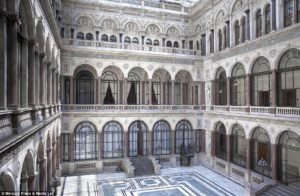
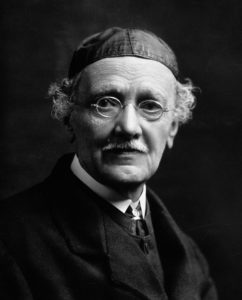







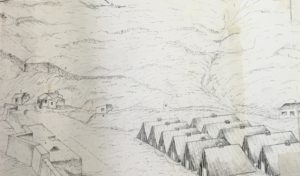
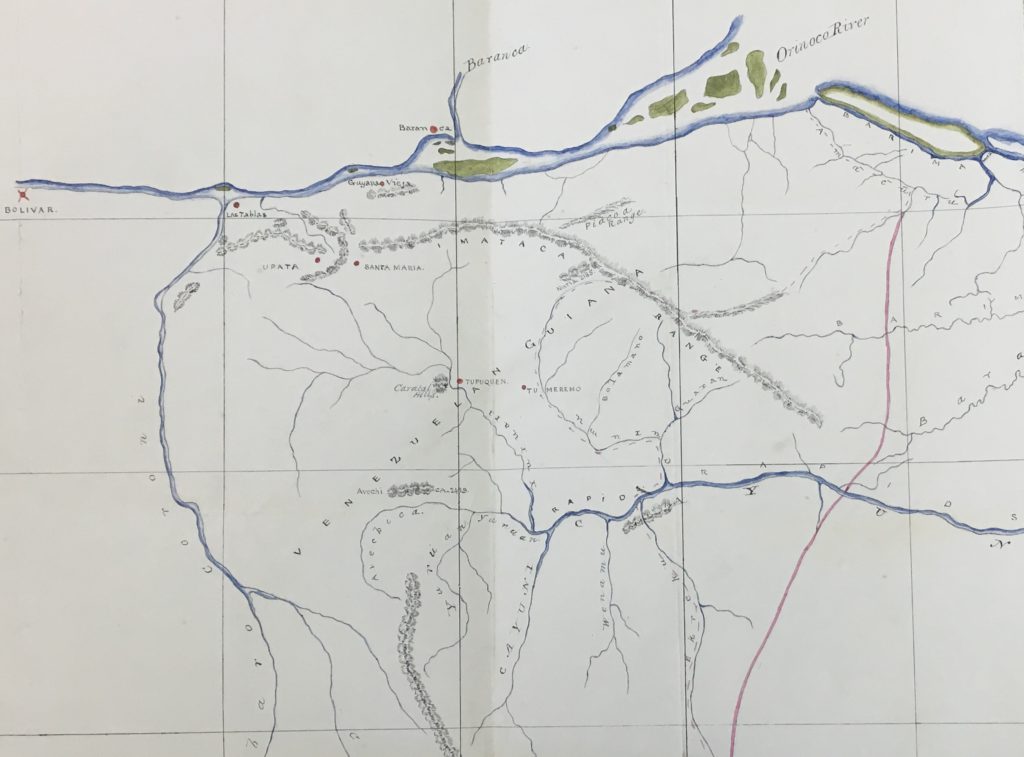
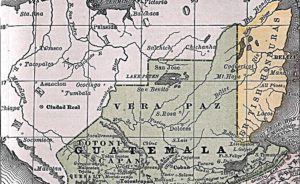

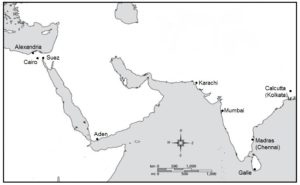
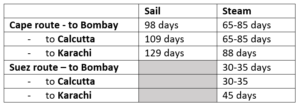
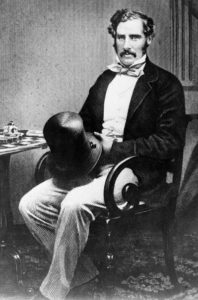

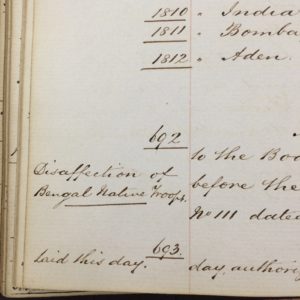
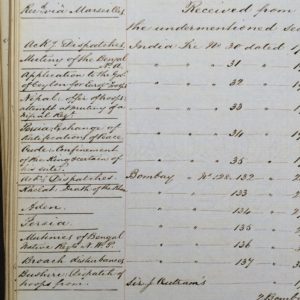
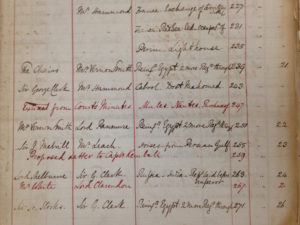
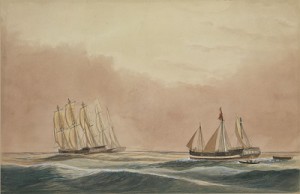
Recent Comments